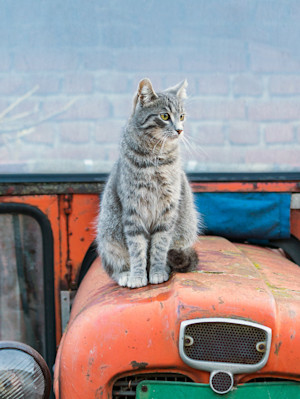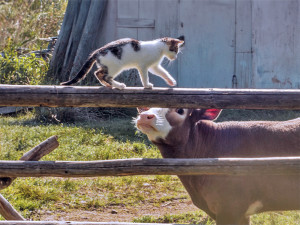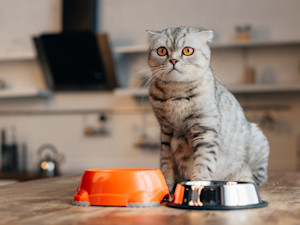Everything You Need to Know to Keep Your Pet Safe from Bird Flu
Three veterinary experts weigh in.
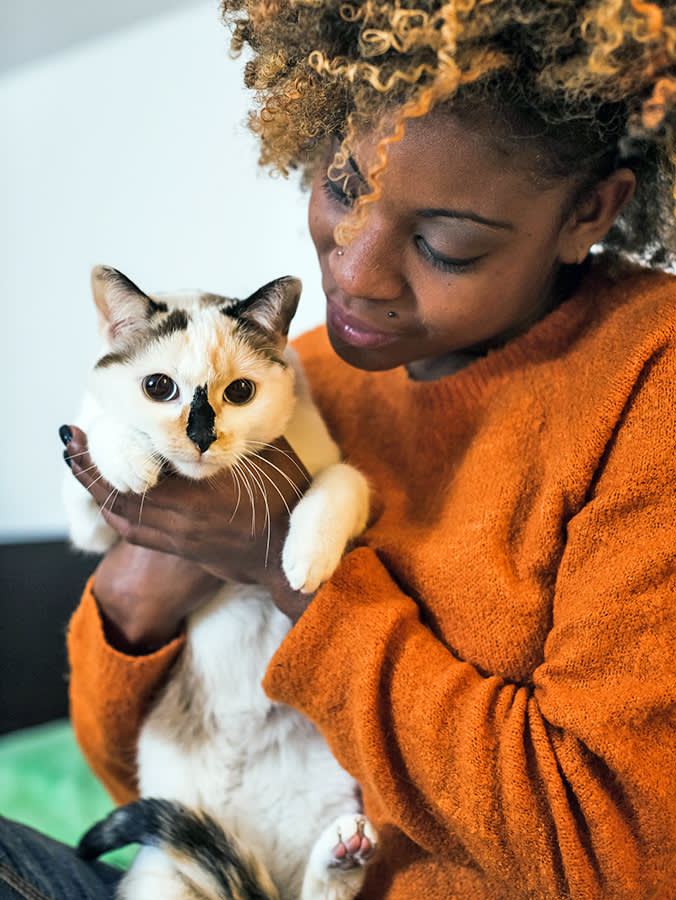
Share Article
As tired as we all might be of rising egg pricesopens in a new tab, avian influenza (H591), aka bird flu, isn’t going away any time soon. It’s decimating farmsopens in a new tab and killing off cowsopens in a new tab, and 70 peopleopens in a new tab have been infected since last Apriopens in a new tab l, according to data from the Centers for Disease Control (CDC) last updated on March 19. The CDC has provided guidelinesopens in a new tab for humans to protect themselves against bird flu, but pet parents face an additional concern: How do we keep our animals safe?
Since December 2024, at least two dozen household cats have diedopens in a new tab after contracting birdopens in a new tab flu in Oregon, California, New Jerseyopens in a new tab, Coloradoopens in a new tab, and New Yorkopens in a new tab (specifically New York City). Twenty big cats at a wildlife sanctuary in Washington state died of the virus opens in a new tab in December. On March 6, officials in Manhattan, Kansas said two cats had contracted the virusopens in a new tab but did not report if they survived.
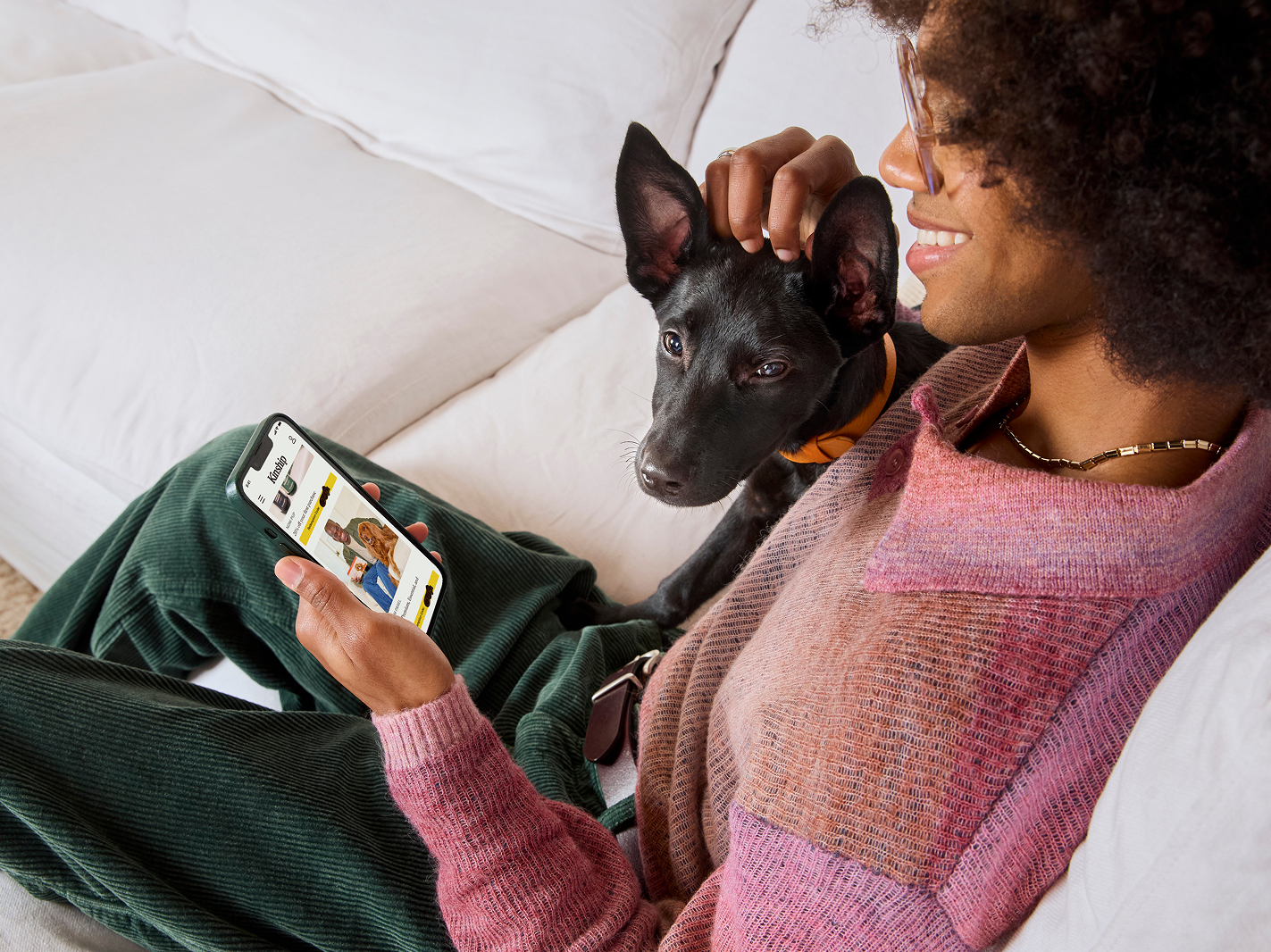
Get (totally free) deals for food, treats, accessories, tech, and way more pet parenting must-haves.
opens in a new tabAdditionally, experts have already said that cats who spend time outdoors are more at risk of contracting the illness, which has led vets to urge pet parents opens in a new tab to turn their adventure kitties into indoor felinesopens in a new tab (if possible). So far, bird flu does not seem to significantly affect dogs. Cats, however, are a different story.
And though recent headlines seem to indicate it, this isn’t isolated to this year. According to data last updated on March 12, the United States Department of Agriculture (USDA) has confirmed 115 cases of bird flu in domestic cats since December of 2022 (search “domestic cat” below the map hereopens in a new tab to find that number). That might not be a zombie apocalypse-level outbreak yet, but still, thinking proactively can help keep you and your pets flu-free.
To help answer all of the burning questions pet parents need answered, we consulted a veterinary virologist, a veterinarian, and an emergency and critical care veterinarian. Read on to find out their recommendations to keep your pets safe from bird flu — and why that might involve giving up your backyard chicken coop.
What is bird flu?
Bird flu is a viral infection that affects birds, cows, and other animals. In humans, symptoms include conjunctivitis (pink eye) and mild to severe respiratory issues. Right now, as stated above, we’re dealing with an outbreak of H5N1 — a highly pathogenic avian influenza (HPAI) strain.
Can dogs and cats catch bird flu?
The risk of domestic cats and dogs contracting the virus is considered low at the moment, but cats are more susceptible than dogs. Veterinarian Dr. Cynda Crawford, a Dr. Fredrica Saltzman-endowed professorship chair in shelter medicine at the University of Florida College of Veterinary Medicine, explains that dogs can contract certain avian influenza viruses, including H5N1, but the infection doesn’t usually last long enough to develop into a disease like those we see in cats and other animals.
How do pets catch bird flu?
The risk of a pet contracting bird flu is low right now, but don’t get complacent; influenza is notorious for mutating rapidly, meaning that what’s safe one day could become more hazardous tomorrow. To reduce your family’s risk, keep up to date on H5N1 guidelines by checking in regularly with reliable sources like the USDA and CDC. For now, our experts identified three key risk factors:
Contact with infected cattle or birds
This one’s kind of a no-brainer. If your dog or cat comes in contact with infected animals, dead or alive, they could contract the virus themselves. Because of that, outdoor cats are at a higher risk than indoor cats — especially if they live west of the Mississippi River. (One cat in Colorado named Leonardo DiCaprio, is reportedly the sole survivor out of the 11 who contracted the virus in the state.)
Also, you know those backyard chicken coops that are becoming more popular in suburbia? Dr. Crawford has bad news: A lot of those birds have gotten H5N1.
If you have an outdoor cat, Dr. Ian DeStefano, an emergency and critical care veterinarian and assistant professor at Cummings School of Veterinary Medicine at Tufts University, suggests speaking with your veterinarian to determine what measures might be needed to keep them safe.
“Owners with cats that have outdoor access just really need to be aware of what environmental risks there are,” Dr. Crawford adds.
As for dogs? If you live in an area where potentially infected animals lurk, keep them on a leash and supervise them in the backyard to prevent contact. Bird flu or not, you don’t want your dog eating, interacting with, or sniffing around a sick animal.
Exposure to contaminated environments or items
Bird flu safety isn’t just about dodging infected animals; you’ll also want to avoid places where they’ve been and items that might have touched them. Surfaces, objects, and water sources can all be contaminated with these animals’ feces and bodily fluids. You don’t want any of that near your pet (or, honestly, you).
Also, word to the wise: People who work in contaminated conditions can bring the virus home if they don’t take proper precautions. Wash and disinfect your hands, and change your clothes to prevent spreading potential contaminants around. “Shoes are an additionally major and often overlooked source of contamination in the home,” says veterinary virologist Dr. Jacquline Risalvato, assistant professor of veterinary virology and virology and immunology diagnostic laboratory director for the University of Tennessee College of Veterinary Medicine. So don’t forget to ditch your kicks at the door.
Consuming raw meat, pet food, or dairy products
Some of us might love a good steak tartare, but unfortunately, raw or undercooked meat and dairy from infected animals can pass the virus along to pets. Indoor cats have contracted the virus by drinking unpasteurized milk (like this case in Texasopens in a new tab last year) and eating uncooked food, Dr. Crawford says. Dr. Risalvato points out that companies making raw pet foods have been forced to issue recallsopens in a new tab. Keep your pets’ diet H5N1-free by serving them only pasteurized dairy products and fully cooked food.
Can I get bird flu from my pet?
It’s possible, especially given how adaptable influenza can be, but at the moment, Drs. Crawford and DeStefano say, there’s no clear evidence that cats or dogs that become sick with bird flu can easily transmit the virus to humans. In early February, The New York Times reported that the CDC published opens in a new tabthen quickly unpublished data that the suggests bird flu had been spread from cats to humans within the same household.
Despite that confusing occurrence, no other information about this, or any further cases, have been reported. “Right now,” Dr. Crawford says, “they seem to be what’s called a dead-end host.”
Although the risk is low for now, that could change if the virus mutates. There are dozens of documented cases of humans contracting bird flu from poultry animals or cattle. Dr. Risalvato also notes that people with weakened immune systems might be at higher risk.
How can I tell if my dog or cat has bird flu?
Unlike human children, cats and dogs can’t speak up and tell us when they’re feeling under the weather. In dogs, Dr. Crawford says, bird flu will likely be a silent infection that comes and goes without visible symptoms. In cats, however, it will be fairly obvious.
H5N1 often causes neurological and respiratory diseases in cats, Dr. Crawford says, and unfortunately, the neurological disease tends to be fatal. “Very few cats have recovered because they had a milder neurological disease, such as paralysis of the hind limbs,” Dr. Crawford says. “But so far, it has a high mortality rate.”
According to all three experts, neurological symptoms in cats can include:
Wandering in circles
Bumping into things
Tremors
Blindness
Staggering
Struggling to stand
Seizures
Meanwhile, respiratory symptoms can include:
Mouth-breathing
Fast breaths
Beyond these symptoms, watch for feveropens in a new tab, lethargy, loss of appetiteopens in a new tab, pink eye opens in a new tab(red, inflamed eyes), and discharge from the eyes and/or nose. Keep in mind, however, that like most symptoms, these have many different causes, plenty of which have nothing to do with bird flu.
What should I do if I think my pet has bird flu?
Most states require that private veterinarians consult with state veterinarians before approving avian influenza testing, so if you suspect your pet has bird flu, don’t waste time. Contact your veterinarian immediately, and be prepared to describe their symptoms, as well as any potential exposures. And finally, don’t forget to monitor your own health and watch for signs that you are sick as well. Although there is not a high risk for transmission, risk factors can evolve rapidly.

Laura Bradley
Laura is a New York-based experienced writer and mom of two rescue pups. When she is not writing or walking the pooches, you will probably find her in the community garden.
Related articles
![Cat sleeping at home in the sun.]() opens in a new tab
opens in a new tabBird Flu Is Infecting Cats Across The Country—Including Indoor Ones
Nearly 40 domestic cats have been infected with bird flu—two of which have never been outside.
![Outdoor cat sits on a tractor outside.]() opens in a new tab
opens in a new tabCats May Become Bird Flu Carriers, New Study Warns
With bird flu cases on the rise, scientists are worried the virus could mutate.
![Calf looking up at a cat on a farm.]() opens in a new tab
opens in a new tabCats Who Consumed Raw Milk Died From Bird Flu, Reports the CDC
Unpasteurized milk can transmit avian influenza from cows to mammals.
![cat with empty food bowls]() opens in a new tab
opens in a new tabPet Food Recalled for Bird Flu Contamination After Cat Dies
A cat in Oregon passed after eating from the affected batch.
![Cute cat looking outside the window.]() opens in a new tab
opens in a new tabCats Should Be Kept Indoors to Avoid Bird Flu, Veterinarians Warn
The recommendation comes after multiple cats passed away from the virus.




